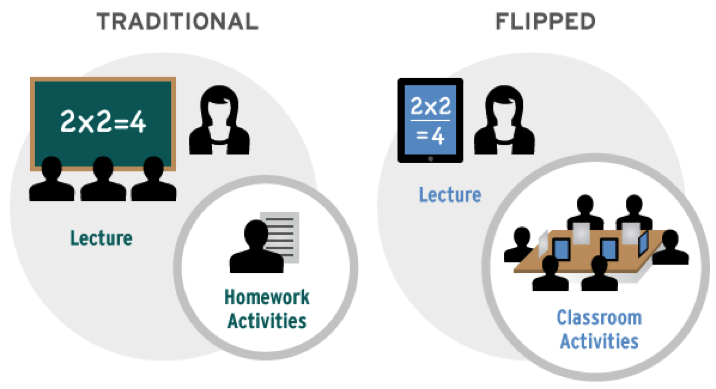Investigating the Flipped Classroom
The flipped classroom is gaining wide attention as a tool for reaching the 21st century student. In a flipped class, students watch online videos of what would traditionally be presented during class time, then, during class, they complete what would traditionally be done as homework.
Researchers suggest that flipped classrooms lead to better student engagement and overall learning (Bormann, 2014) but, critics note that this technique is grounded in what is possibly a flawed pedagogy: the lecture (Ash, 2012). Roehl, Reddy, and Shannon (2013) advocated the use of the flipped classroom design for apparel merchandising and design course. However, there is little literature concerning the effectiveness of the flipped classroom technique in the field.
Purpose
Investigate the effectiveness of the flipped classroom design on student learning for an apparel merchandising course (AMD 376: Merchandise Planning & Control)
Research Questions
RQ1: Do students perform better in a flipped or lecture-based classroom?
RQ2: Which design (lecture or flipped) do students prefer?
RQ3: Do student characteristics influence their performance in a flipped versus lecture-based classroom?
RQ3: Do student characteristics influence their preference for a flipped versus lecture-based classroom?
Method
Course Design
–Two flipped units
–Two lecture units
- Online videos
- Online Assignments
- Classtime: worksheets, activities, case studies, industry visits
Mixed Methods Approach
- Online surveys after each unit (extra credit)
- Focus Groups conducted by undergraduate RAs (to protect confidentiality)
Instrument
Likert-type items:
- Self efficacy (adapted from Bandura, 2006)
- Academic efficacy (Midgley et al., 2000)
- Self efficacy for self regulated learning (Usher & Pajares, 2008)
- Math Anxiety (Betz, 1978)
Open-ended items:
- I.e., “What about unit 2 of the course and/or the instructor’s teaching of it that needs change or improvement?”
Demographics/Student Statistics, i.e. GPA
Data Analysis
RQ1: Blocked Design ANOVAs:
- IV: Teaching Method
- Blocking Factors: Student, Unit
- DVs: Grades, Self-efficacy
RQ3: Multiple Regressions
- IVs: Self-efficacy, academic efficacy, efficacy or self-regulated learning, math anxiety
- DVs: Flipped units average grade, Lecture unites average grade
RQ2&4: Qualitative analysis of open-ended questions and focus group transcripts
Results
Research to be completed 2017

